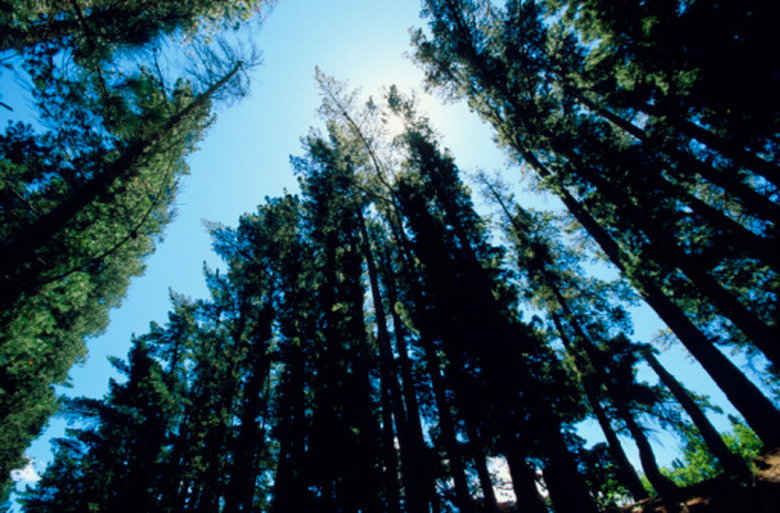How To Use Tordon To Kill Trees
Things Needed
-
Ax or hatchet
-
Tree injector
-
Applicator bottle
-
Long-sleeved shirt
-
Long pants
-
Protective eyewear
-
Chemical-resistant gloves
-
Socks and shoes
Tip
Tordon can be used at any time of the year.
Warning
When treating maple trees or other species that produce sap in the spring, avoid applying the herbicide during the sap flow. The herbicide may not be as effective at that time due to inadequate absorption.
Do not apply the treatment more than once yearly.
Take extra precautions not to apply the herbicide to any surrounding vegetation. Avoid the root systems of surrounding trees.
Do not use Tordon near bodies of water, on rainy days or when there is snow on the ground. Do not allow any run-off to enter streams or irrigation systems. Tordon can remain toxic to aquatic life for more than a year after application.
Sometimes trees need to be killed due to overcrowding or disease but it is impractical to cut them down. In those instances, an herbicide is used to kill the tree from the inside out while the tree is allowed to stand in place. Tordon is the brand name of a product manufactured by Dow AgroSciences containing a powerful herbicide known as Picloram. This herbicide is regulated by the EPA due to its high level of toxicity to plant life and wildlife. Check with state officials to find out if it is approved for use in your area.
Step 1
Put on protective clothing, eye protection and protective gloves.
Step 2
Make 2-inch cuts with an ax deep enough to reach the sapwood of the tree. The cuts should be evenly spaced 2 to 3 inches apart. Cut completely around the circumference of the tree at a height of 2 to 4 feet. Alternatively, some tree injectors are made to both cut into the tree and apply the herbicide.
Step 3
Fill a tree injector or applicator bottle with the amount of Tordon recommended by the manufacturer. The amount will vary depending on the size of the tree.
Step 4
Inject the herbicide into the cut areas of the tree. The recommended amount is generally 1 to 2 milliliters per cut, depending on the tree's circumference. Apply just enough to wet the cut areas; do not allow for any runoff.
